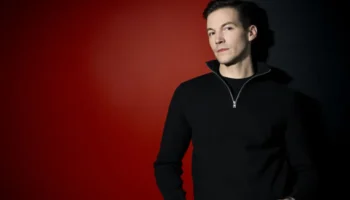The eighth esctoday.com TOP TEN list starts today with the places 10, 9 and 8 being announced. As announced on Saturday, this week's topic are the TOP TEN most crazy national final formats.
National final formats that met one or more of the following criteria were considered:
- strange/complicated/unsual voting system
- overly lengthy process/unusual selection of finalists
- high effort turns out to be needless
This list is about formats, so strange/unexpected results and bizarre entries, performances and presentations are not considered.
So here we start…
No. 10 – Eurostar
Number ten on the list is an example of a broadcaster putting much effort into a national selection in vain. Greek broadcaster ERT wanted to use a Pop Idol style contest to select the Greek entrant for the the Eurovision Song Contest 2004, but after the the final, it turned out that it was indeed quite needless…
The winner of the show Eurostar was Apostolos Psichramis but soon after the final, it was announced that Sakis Rouvas would wave the Greek flag in Istanbul. The orignal explanation for that was that Eurostar finisehd one month later than expected, which did not give composer Nikos Terzis enough time to create a suitable song. Soon after, an ERT spokesperson explained that in 2004, when the Olympic games were held in Athens, Greece was supposed to be represented the best way possible in the Eurovision Song Contest. Apostolos Psichramis and the other two Eurostar finalists were given the opportunity to perform as backing singers in Eurovision.
It was probably a good idea by ERT to swith to an internal selection as Sakis Rouvas finished third both in the semi final and in the final (getting points from all other countries) with his song Shake it.
The Eurostar winner:
http://www.youtube.com/watch?v=bjXAM8pAtAY
No. 9 – Söngvakeppni sjónvarpsins 2008
After disappointing results in previous years, the Icelandic broadcaster RÚV came up with a whole new concept in order to select the Icelandic Eurovision Song Contest entrant and song for Belgrade. It turned out to be the most lengthy process in the Icelandic Eurovision Song Contest history. It was even harder to follow that selection due to the fact that it was not made clear how the selection would take place until it was already half way through…
33 songs were in the running, spread over no less than eleven semi finals, which later turned out to be actually quarter finals. Nine composers had been invited to write three songs each and another six songs were chosen out of those that were submitted to the broadcaster following an open call. The eleven semi finals were held as part of the weekly show Laugardagslögin. Televoting selected the favourite out of the three songs presented every week. After the results were announced, a new televoting started in order to select a possible wildcard entrant for the second chance round. Therefore, after elven weeks, eleven semi final participants and eleven possible wildcards were chosen. The broadcaster then internally chose three songs out of the possible wildcards and those competed in a second chance round. Afterwards, the 12 semi finalists were complete. They were again split into four semi finals with the top two out of each moving forward to the grand final. The national final itself was rather simple featuring eight performances and televoting alone selected the winner.
This format was partly a success for Iceland. Euroband, who had won the national final with their song This is my life, were the first Icelandic act to qualify for the final since 2004. Eventually, they finished 14th with 64 points.
The first of 33 songs – Boys and perfume:
No. 8 – Sept villes, une chanson
When the French national final for the Eurovision Song Contest kicked off, it was probably not even clear that it would determine the French entry in Frankfurt. Sept villes, une chanson (Seven towns, one song) was a contest full of dubious rules and decisions that can hardly be explained these days…
Six shows were held from December 1956 onwards. It is likely that the prgramme was not supposed to determine the French entry in the Eurovision Song Contest 1957 in the beginning for two reasons: In the first two shows, the Eurovision Song Contest was not even mentioned and in the first show, a song took part that would have definitely not been able to represent France in Frankfurt: Il est là, which was already one of the French entries in 1956. However, this time it was performed by a band called Les blues stars. The voting format may sound familiar: Seven towns each had a jury and each jury member could give one point to his or her favourite song. This voting system was very similar to the one that was used in the Eurovision Dong Contest from 1957 onwards. In the later stages of show, there were only six juries left for unknown reasons. The results were announced at the end of the shows so six winners were left. However, there was never a final and there would have not even been time to hold one as the sixth show was held only three days before the Eurovision Song Contest 1957. Anyway, the song La belle amour, winner of the fifth show, was sent to the international competition. There it was not sung by the original performer Josette Privat but by Paule Desjardins.
The selection process may have been complicated and dubious, but it did pay off for France: Paule Desjardins finished second in Frankfurt with La belle amour.
Original version of Il est là, French entry in 1956:
Tomorrow, we will introduce no. 7 and 6 on the list.



